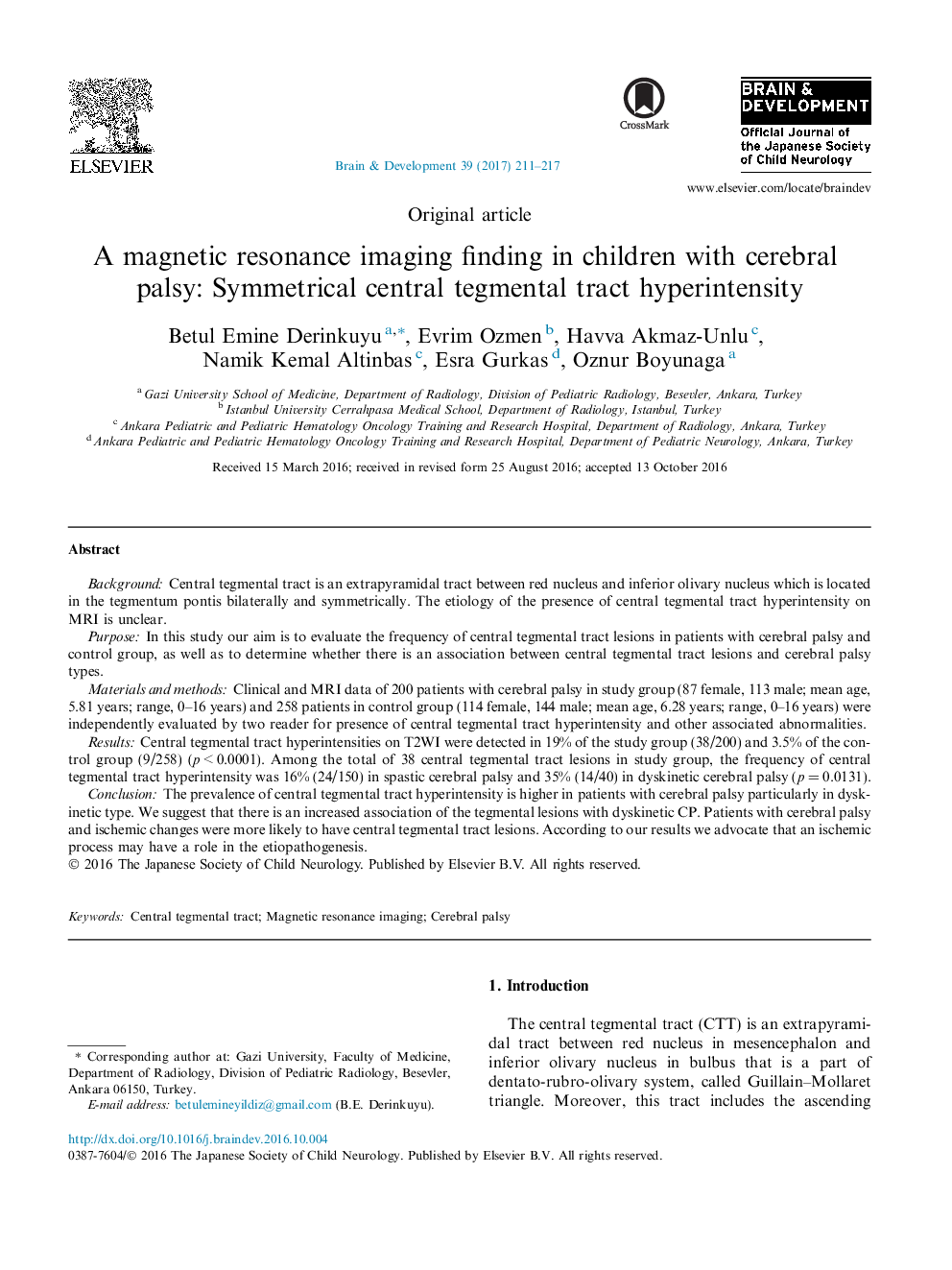| Article ID | Journal | Published Year | Pages | File Type |
|---|---|---|---|---|
| 5626333 | Brain and Development | 2017 | 7 Pages |
BackgroundCentral tegmental tract is an extrapyramidal tract between red nucleus and inferior olivary nucleus which is located in the tegmentum pontis bilaterally and symmetrically. The etiology of the presence of central tegmental tract hyperintensity on MRI is unclear.PurposeIn this study our aim is to evaluate the frequency of central tegmental tract lesions in patients with cerebral palsy and control group, as well as to determine whether there is an association between central tegmental tract lesions and cerebral palsy types.Materials and methodsClinical and MRI data of 200 patients with cerebral palsy in study group (87 female, 113 male; mean age, 5.81 years; range, 0-16 years) and 258 patients in control group (114 female, 144 male; mean age, 6.28 years; range, 0-16 years) were independently evaluated by two reader for presence of central tegmental tract hyperintensity and other associated abnormalities.ResultsCentral tegmental tract hyperintensities on T2WI were detected in 19% of the study group (38/200) and 3.5% of the control group (9/258) (p < 0.0001). Among the total of 38 central tegmental tract lesions in study group, the frequency of central tegmental tract hyperintensity was 16% (24/150) in spastic cerebral palsy and 35% (14/40) in dyskinetic cerebral palsy (p = 0.0131).ConclusionThe prevalence of central tegmental tract hyperintensity is higher in patients with cerebral palsy particularly in dyskinetic type. We suggest that there is an increased association of the tegmental lesions with dyskinetic CP. Patients with cerebral palsy and ischemic changes were more likely to have central tegmental tract lesions. According to our results we advocate that an ischemic process may have a role in the etiopathogenesis.
